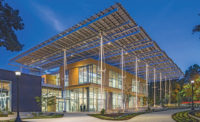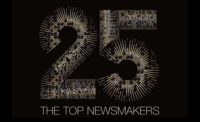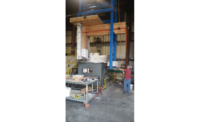Method Coming for Validating A Fire-Model Application
Fire-protection engineers and other interested parties have until March 31 to comment on draft guidelines for substantiating a computer fire model for a specific application. The five-step methodology, recently issued by the Society of Fire Protection Engineers for review, has been welcomed by fire-protection and code consultants.
“RJA supports the effort to develop a guide that will be a useful tool for the practicing professional that will aid in the communications between fire-protection engineers and the local authorities,” says Martin H. Reiss, president and CEO in the Boston office of RJA Group Inc. He calls the computer simulations valuable tools when used within their prescribed limitations by experienced professionals.
The 87-page guide is oriented toward modelers who want to show the particular model they are using is appropriate. “Anytime you are using a tool that can have an impact on public safety, you want to have confidence in that tool,” says Morgan J. Hurley, technical director of Bethesda, Md.-based SFPE.
“Computer modeling for safety analysis and design of safety systems has become commonplace in many disciplines,” says the draft, which is available on http://www.sfpe.org/upload/draft_for_com ments.pdf. “While computer fire models have been in existence since the early 1980s, it is only recently that they have become commonplace tools across a range of applications,” the draft says.
Software often is used to evaluate a performance-based design, support development of a fire hazard or risk analysis, illustrate principles of fire behavior and fire protection for training or education, test hypotheses in forensic analysis and support fire research, says the guide.
The guide, in the works for more than two years, has no peer, says Hurley. The draft was developed by a 14-person task group, chaired by Craig Hofmeister, RJA’s vice president of engineering technology. The draft includes guidance on three model types: One is simple algebraic correlations solved by a calculator. Another is a zone model representing space as a small number of elements. The third is even more complex computational fluid dynamics models (CFDs) approximating a space as a large number of discrete volumes.
Code consultant Richard C. Schulte, of the Chicago-based firm that bears his name, thinks the guidelines are potentially helpful, to the extent they call code officials’ attention to the need for a model’s validation. But he says the draft is too general, which throws its usefulness into question.
The document is good in that it stresses validation as an integral part of a fire-modeling study, says Schulte. Without validation that the model is capable of accurately performing the task that the modeler claims it performs, a study should be considered “irrelevant,” he says.
For Schulte, the guide is long overdue. He points to limitations on the use of CFD for fire modeling, referencing the well-known CFD model called the Fire Dynamics Simulator (FDS), developed by the National Institute of Standards and Technology. “The need for validation of the model should have been emphasized when the FDS was first introduced more than a decade ago,” he says. Validation for specific applications is “key” to the use of FDS, he adds.







